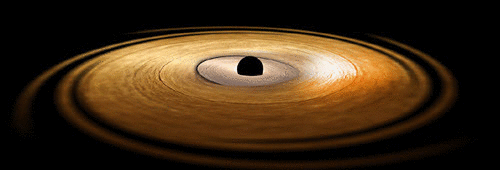Quasi-periodic oscillations

The fastest variability components in X-ray binaries detected so far are kilohertz quasi-periodic oscillations in neutron star binaries (kHz QPOs). In general, variations in the X-ray spectra that happen on an almost periodical basis have been detected both for neutron stars and black holes.
For black holes, they are detected in different frequency ranges and are divided into low-frequency QPOs, roughly between 0.1-30 Hz, and high-frequency QPOs, detected in the range of 40 to 450 Hz.
High-frequency QPOs have been observed in accreting black holes since the late 1990s. Their frequencies correspond to the orbital frequencies of matter close to the innermost stable circular orbit of the accretion disk of a black hole of about 10 solar masses, and they do not vary significantly in response to changes in the luminosity. Low-frequency QPOs are normally detected with high significance, thanks to their high amplitudes, and their origin is thought to be either in some instability in the accretion flow or in a geometric oscillation. Neutron stars QPOs (also called kHz QPOs) usually appear as a double peak in the power spectrum of the X-ray emission and the two peaks are observed to shift in frequency together in the 300-1200 Hz range, and their changes are correlated with the source state and often with luminosity. Similar to high frequency QPOs for black holes, the higher-frequency peak of the neutron star kHz QPOs appears to be at frequencies comparable to the orbital motion close to the innermost radius of the accretion disk; the origin of the lower-frequency peak is still poorly understood, but it is thought to be somehow related to the spin frequency of the star.
The mechanism responsible for QPOs, or even if neutron stars’ and black holes’ QPOs are related, is still debated, but a careful study of their characteristics can lead to a better understanding of the physics of black-hole accretion and of general relativistic effects in the strong field regime
